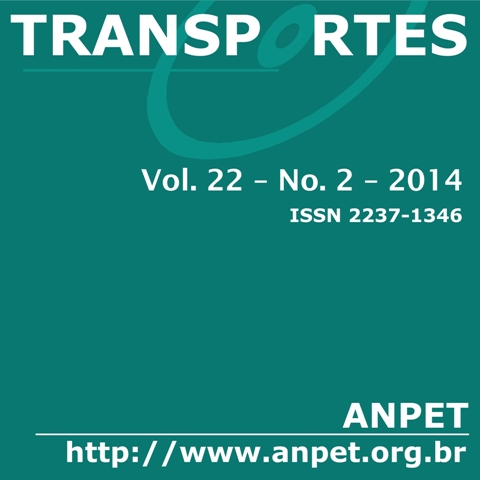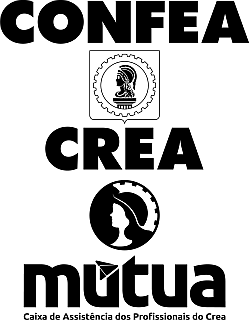Revisão sobre modelagem matemática na logística humanitária
DOI:
https://doi.org/10.14295/transportes.v22i2.732Palavras-chave:
Logística humanitária. Desastres naturais. Modelos matemáticos.Resumo
Este trabalho apresenta uma revisão de artigos científicos que propõem uma modelagem matemática para atuação na logística humanitária. A partir desta revisão, foram levantados os principais métodos utilizados dentro de três etapas da cadeia de suprimento humanitária: Aquisição, Armazenagem e Transporte/Distribuição. Também foram identificadas as prin-cipais variáveis de decisão utilizadas nos modelos, sendo enfatizadas as particularidades de tais variáveis no contexto da logística humanitária. Desta forma, foi possível perceber as dificuldades de utilização de modelos em operações de resposta a desastres. Portanto, são discutidos aspectos associados às características que cercam o desenvolvimento e a funcionali-dade de cada modelo, no que diz respeito às possibilidades de maior aderência do modelo matemático às reais condições operacionais da ação de resposta humanitária.Downloads
Referências
BANDEIRA, R. A.M, CAMPOS, V.B.G, e BANDEIRA, A.P. F. (2011) Uma visão da logística de atendimento à população atingida por desastre natural. Anais do XXV Congresso de Pesquisa e Ensino em Transportes, ANPET, Belo Horizonte.
BARBAROSOGLU, G e ARDA, Y (2004) A two-stage stochas-tic programming framework for transportation planning in dis-aster response. Journal of the Operational Research Society (2004) 55, p. 43–53. DOI:10.1057/palgrave.jors.2601652.
BEAMON, B. M. e BALCIK, B. (2005) Distribution Network Design for Humanitarian Relief Chains. IE Graduate Seminar, November 8, 2005 IE Graduate Seminar, November 8, 2005. http://courses.washington.edu/ie59x/abstracts/IEseminar05.pdf
BEAMON, B. M. e BALCIK, B. (2008) Facility location in hu-manitarian relief. International Journal of Logistics: Research and Applications. Vol. 11, No. 2, April 2008, 101–121.
BEAMON, B. M. e KOTLEBA, S. A. (2006) Inventory model-ing for complex emergencies in humanitarian relief operations. International Journal of Logistics: Research and Applications, Vol. 9, No. 1, 2006, pp. 1-18. DOI:
1080/13675560500453667.
BERTAZZO, T., BRITO JUNIOR, I., LEIRAS, A. e YOS-HIZAKI,H. (2013) Revisão da literatura acadêmica brasileira sobre a gestão de operações em desastres naturais com ênfase em logística humanitária. Transportes, v. 21, n.3, p. 31-39. DOI:10.4237/transportes.v21i3.633.
CAMPBELL, A. M. VANDENBUSSCHE, D. HERMANN, W. (2008) Routing for Relief Efforts. Transportation Science 2008-5 Volume: 42 Issue Number: 2 pp 127-145 Publisher: Institute for Operations Research and the Management Sciences. DOI: 10.1287/trsc.1070.0209.
CASTRO, Antônio Luiz Coimbra de. Manual de planejamento em defesa civil. Vol.1. Brasília: Imprensa Nacional, 1999.
CLARK, A. e CULKIN, B.(2007) A Network Transshipment Model for Planning Humanitarian Relief Operations after a Nat-ural Disaster. In: 22nd European Conference on Operational Re-search, vol. 44; 2007. p. 1e34.
COSTA, S.R.A, BANDEIRA, R.A.M, CAMPOS, V.B.G (2012) Uma análise do processo de distribuição na cadeia de suprimen-tos me operações humanitárias. Anais do XXXII Encontro Na-cional de Engenharia de Produção, ENEGEP, Bento Gonçalves.
DE BEER, E.J.H. e VAN NIEKERK, E. (2004)The estimation of unit costs of road traffic accidents in South Africa.Technical report, National Department of Transport.
DE VILLE DE GOYET, C. e MORINIÈRE, L.(2006) The role of needs assessment in the tsunami response. Tsunami Evalua-tion Coalition, London.
EMMETT, J. e LODREE, J. (2011) Pre-storm emergency sup-plies inventory planning. Journal of Humanitarian Logistics and Supply Chain Management Vol. 1 No. 1, 2011 pp. 50-77
FALASCA, M., ZOBEL, C. W. e FETTER, G. M. (2009) An optimization model for humanitarian relief volunteer manage-ment. Proceedings of the 6th International ISCRAM Conference – Gothenburg, Sweden, May 2009 J. Landgren and S. Jul, eds.
FORRESTER, J.W. (1971) Counterintuitive behavior of social systems. Technology Review, Vol. 73 No. 3, pp. 52-68. DOI: 10.1007/BF00148991.
GUHA-SAPIR, Debarati; HOYOIS, Philippe e BELOW, Re-gina.(2013) Annual Disaster Statistical Review 2012: The num-bers and trends. Centre for Research on the Epidemiology of Disasters. Brussels: CRED; 2013. Disponível em: <http://cred.be/sites/default/files/ADSR_2012.pdf>. Acessoem: 13 nov 2013.
GUNNEC, D. e SALMAN, F. (2007) A two-stage multi-criteria stochastic programming model for location of emergency re-sponse and distribution centers. In: International Network Opti-mization Conference - INOC 2007. Acessado em 14/07/201 peloendereçohttp://www.mendeley.com/research/twostage-multicriteria-stochastic-programming-model-location-emer-gency-response-distribution-centers/
HUANG, M. SMILOWITZA, K. BALCIK, B. (2012) Models for relief routing: Equity, efficiency and efficacy. Transportation Research Part E: Logistics and Transportation Review Volume 48, Issue 1, January 2012, Pages 2–18 Select Papers from the 19th International Symposium on Transportation and Traffic Theory. DOI: 10.1016/j.sbspro.2011.04.525.
IFRC: International Federation of Red Cross and Red Crescent Societies (2000) Disaster Preparedness Training Programme. 2000. Disponível em: <http://www.ifrc.org/Global/In-trodp.pdf>. Acesso em: 23 nov 2013.
IFRC: International Federation of Red Cross and Red Crescent Societies (2009) Emergency items catalogue. Available at http://procurement.ifrc.org/catalogue/ Acesso em: 23 nov 2013.
JALLER, M. e HOLGUÍN-VERAS, J .(2011) Locating Points of Distribution in Disasters with Social Costs Considerations. Submitted to the Transportation Research Board (TRB) 90th An-nual Meeting, Washington, D.C. Acessado em 15/07/2012 no endereço: http://transp.rpi.edu/~HUM-LOG/Doc/PODs.pdf
KOVACS, G. e SPENS, K. (2007). Humanitarian logistics in di-saster relief operations. International Journal of Physical Distri-bution & Logistics Management, v. 37, n. 2, p. 99-114.
LIN, Y. H. BATTA, R. ROGERSON, P. A. BLATT, A. FLAN-IGAN, M. (2009) Application of a Humanitarian Relief Logis-tics Model to an Earthquake Disaster. Transportation Research Record http://www.citeulike.org/user/hmedal/article/9217419
LIN, Y.H., BATTA, R., ROGERSON, P.A., BLATT, A., FLANIGAN, M., LEE, K.(2010) A Logistics Model for Emer-gency Supply of Critical Items in the Aftermath of a Disaster.
Socio-Economic Planning Sciences Volume 45, Issue 4, Decem-ber 2011, Pages 132–145 http://www.acsu.buf-falo.edu/~batta/trb_Batta.pdf. DOI: 10.1016/j.seps.2011.04.003.
LONG, D. e WOOD, D. (1995) The Logistics of Famine Relief. Journal of Business Logistics. 16, 213-229.
McGUIRE, G.(2001) Supply Chain Management in the Context of International Humanitarian Assistance in Complex Emergen-cies – Part 2. Supply Chain Practice. 3, 4-18.
METE, H. O. e ZABINSKY, Z. B.(2009) Preparing for Disas-ters: Medical Supply Location and Distribution. Retrieved Jan-uary, 25 2009. http://parvac.washington.edu/papers/downloadpa-per.phd/id=13/parvac_13.pdf
NAGURNEY, A. YU, M. e QIANG, Q. (2010) Supply chain network design for critical needs with outsourcing. Papers in Re-gional Science, Volume 90 Number 1 March 2011.
NAGURNEY, A. YU, M. e QIANG, Q. (2012) Multiproduct Humanitarian Healthcare Supply Chains: A Network Modeling and Computational Framework. Proceedings of the 23rd Annual
POMS Conference, Chicago, Illinois, April 20-23, 2012.
NATARAJARATHINAM, M.; CAPAR, I. E NARAYANAN, A. (2009) Managing supply chains in times of crisis: a review of literature and insights. International Journal of Physical Distri-bution and Logistics Management 39(7), 535-573.DOI: 10.1108/09600030910996251.
OLORUNTOBA, R. and GRAY, R. (2005) Humanitarian aid: an agile supply chain? Supply Chain Management. 11, 115-120. DOI: 10.1108/13598540610652492.
OZBAY, K. e OZGUVEN, E.(2007) A Stochastic Humanitarian Inventory Control Model for Disaster Planning. Journal of the Transportation Research Board. Issue Number: 2022. pp 63-75 Publisher: Transportation Research Board ISSN: 0361-1981. DOI: 10.3141/2022-08.
OZDAMAR, L. EKINCI, E. e KUCUKYAZICI. B. (2004) Emergency Logistics Planning in Natural Disasters. Annals of Operations Research. 129, 217-245.
PAN-AMERICAN HEALTH ORGANISATION (PAHO) (2000) Manual Logistical Management of Humanitarian Supply. 2000, www.disaster-info.net/SUMA/english/software/manu-als/MISEManualEnglish.pdf
PEREZ, N. HOLGUIN-VERAS, J. MITCHELL, J.E. e SHARKEY, T.C. (2010) Integrated Vehicle Routing Problem with Explicit Consideration of Social Costs in Humanitarian Lo-gistics. http://transp.rpi.edu/~HUM-LOG/Doc/IRP.pdf
PRÉKOPA, A. (2006) On the Hungarian Inventory Control Model. European Journal of Operational Research, Vol. 171, 2006, pp. 894-914. DOI: 10.1016/j.ejor.2005.01.008.
RAWLS, C.G. TURNQUIST, M.A.(2009) Pre-positioning of emergency supplies for disaster response. Transportation Rese-arch Part B; 44:521e34.DOI: 10.1109/ISTAS.2006.4375894.
SALMERON, J. e APTE, A. (2010) Stochastic Optimization for Natural Disaster Asset Prepositioning. 574 Production and Op-erations Management 19(5), pp. 561–574.
SAMPSON, S. E.(2006) Optimization of volunteer labor assign-ments. Journal of Operations Management, 24, 4, 363-377. DOI: 10.1111/j.1937-5956.2009.01119.x.
THOMAS, A.S. e KOPCZAK, L.R. (2005) From Logistics to Supply Chain Management: The Path Forward in the Humani-tarian Sector. Fritz Institute.
THOMAS, A. MIZUSHIMA, M.(2005) Logistics training: Ne-cessity or luxury?Forced Mitig.Rev. 22: 60–61.
THOMAS, A.S. (2003) Humanitarian Logistics: Enabling Dis-aster Response. Fritz Institute.
TOMASINI, R. and VAN WASSENHOVE, L.V. (2009) Hu-manitarian logistics. Palgrave Macmillan.
VAN WASSENHOVE, L. (2006) Humanitarian aid logistics: supply chain management in high gear. Journal of the Opera-tional Research Society. 57, 475-498.DOI: 10.1057/pal-grave.jors.2602125.
WYK, E. V. BEAN, W.L. e YADAVALLI, V.S.S.(2011) Mod-eling of uncertainty in minimizing the cost of inventory for dis-aster relief. South African Journal of Industrial Engineering May 2011 Vol. 22(1): 1-11.
YI, W. e OZDAMAR, L. (2007) A dynamic logistic coordination model for evacuation and support in disaster response activities. European Journal of Operational Research. 179, 1177-1193. DOI: 10.1016/j.ejor.2005.03.077.
YUSHIMITO, W. F. e UKKUSURI, S. V. (2007) Location rout-ing approach for the humanitarian prepositioning problem. Transportation Research Record: Journal of the Transportation Research Board, Vol. 2089, No. -1. (2007), pp. 18-25.
Downloads
Publicado
Como Citar
Edição
Seção
Licença
Ao submeter um manuscrito para publicação neste periódico, todos os seus autores concordam, antecipada e irrestritamente, com os seguintes termos:
- Os autores mantém os direitos autorais e concedem à Transportes o direito de primeira publicação do manuscrito, sem nenhum ônus financeiro, e abrem mão de qualquer outra remuneração pela sua publicação pela ANPET.
- Ao ser publicado pela Transportes, o manuscrito fica automaticamente licenciado sob a Licença Creative Commons CC BY 4.0. Esta licença permite o seu compartilhamento com reconhecimento da autoria e da publicação inicial neste periódico.
- Os autores têm autorização para assumir contratos adicionais separadamente, para distribuição não exclusiva da versão do trabalho publicada neste periódico (por ex.: publicar em repositório institucional ou como capítulo de livro), com reconhecimento da publicação inicial na Transportes, desde que tal contrato não implique num endosso do conteúdo do manuscrito ou do novo veículo pela ANPET.
- Os autores têm permissão e são estimulados a publicar e distribuir seu manuscrito online (por ex.: em repositórios institucionais ou na sua página pessoal) depois de concluído o processo editorial. Como a Transportes é de acesso livre, os autores são estimulados a usar links para o DOI do artigo nesses casos.
- Os autores garantem que obtiveram todas as permissões necessárias dos empregadores para a publicação e o licenciamento CC BY 4.0 do manuscrito, especialmente se o empregador possuir alguma reivindicação sobre os direitos autorais do manuscrito. Os autores assumem total responsabilidade por questões de direitos autorais relacionadas ao empregador, isentando a ANPET e a Transportes de qualquer responsabilidade relacionada.
- Os autores assumem toda responsabilidade sobre o conteúdo do manuscrito, incluindo as devidas e necessárias autorizações para divulgação de dados coletados e resultados obtidos, isentando a ANPET e a Transportes de toda e qualquer responsabilidade neste sentido.
Última atualização: 27/11/2025











